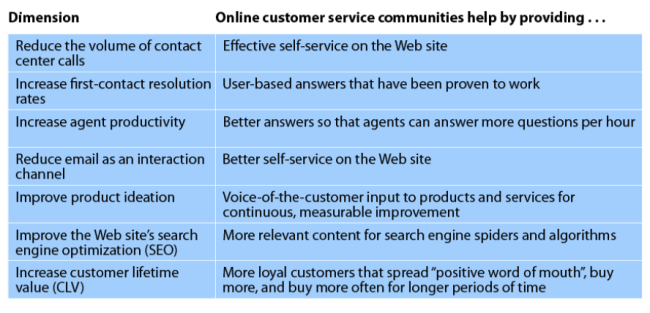While the growths of the Web, social media and online communities have dramatically changed how companies and customers connect the 4 fundamental drivers of business have not. Companies still need to:
a) Build
b) Market
c) Sell
d) Support their products & services
New technologies have helped to simplify processes and reduce the cost of those four drivers. To succeed in today’s competitive market corporations must now meet five new business imperatives:
a) Do more with less
b) Increase profits while dropping cost
c) Implement systems for better ROI, and strategically…
d) Inform, engage, enlist & reward your customers, making them active copartners in your business
e) Become a “Social Business”
The conventional definition of “ROI” as “Return on Investment” is still valid, but the spread of social media and the adoption of new Social CRM tools, ROI should be considered as: “Return on Interaction”.
Analyzing this situation drive us to the following conclusion: by listening, observing, asking, involving, and interacting with customers (partners, and employees too), a truly social business could build better products and services, that are increasingly designed, sold, and even supported by customers.
Every day, more and more customers go to internal or external forums and online communities in search of answers from people like them. Unfortunately, on virtually all of today’s online communities, the process of resolving problems and issues is poorly handled, if not entirely unmanaged.
In order to face this new challenge, companies need to integrate platforms able to listen, involve and interact with their clients in real time. The best way to reach this target at a minimum cost is to crowd source their own customers. If your company is not already crowdsourcing its customer service and support, it’s time to consider doing so. Why? Smart businesses are looking more and more for ways to help their clients.
I. What is Crowdsourcing?
Crowdsourcing is using the “crowd” of users as the “source” to help other users. It allows the number of customer issues to be handled to grow without needs to incur in relevant additional labor costs. By letting users participate in the customer service and support process, it puts them center stage, engages them with the company, and increases loyalty.
Today, customer loyalty is considered as a key element for the success of a company. It determines whether or not it is a prosperous organization and the growth of the loyalty customer base is becoming a more and more relevant KPI.
Why a client is loyal? The most important element for him to be faithful to a brand is the quality of the product or service provided to him and how the enterprise provides it.
II. Main Challenges:
The biggest challenges companies are facing in customer service today are:
a) The growing operating cost of customer service
b) Providing quick answers to questions from many communication channels if not your customer will start to abandon you
c) Monitoring social media where you customers speak about you
d) Operating and extending the number of communication methods that your customer wants to use
e) Distribution of product/service knowledge internally and externally
f) Growing your customer loyalty base
III. The Solution:
Developing a business solution that helps the company to improve the customer service and tackle the challenges of today is the only way and should be sustained by the following three pillars:
a) Create an expert community to provide peer to peer support customer (crowd-sourcing) deflecting requests from internal customer service
b) Settle forums you can control for discussions on your products and services
c) Improve and reuse the knowledge gained from requests/answers to make them easy and accessible with the help of a semantic natural language search engine
IV. Basic Rules:
- This platform has to allow the company to listen, monitor and engage with its customers on social communication channels from one single interface.
- Customers have to be able to choose to communicate from a portal or through a social channel and the answers have to be provided in the customer preferred channel.
V. Secrets for Success:
The company needs to setup and align its peer-to-peer support with the already existing operation model to use or customize the flow that fits the preferred customer experience.
The community has to be animated and/or integrated to other communities. In order to boost peer-to-peer support, a reward engine has to be built in to motivate the experts
VI. Key Benefits:
a) Cost reduction of operation (Normally between -30 & -40%)
b) Increased customer satisfaction and customer loyalty
c) Improved knowledge distribution
d) Higher customer retention
e) Brand protection
f) Being seen as an innovative company
VII. Examples:
The following summary table shows examples of Key benefits of online service and support communities:
VIII. Conclusion:
Crowdsourcing can reduce drastically the burden on the staff, save money, and engage customers.
====================================================================================


